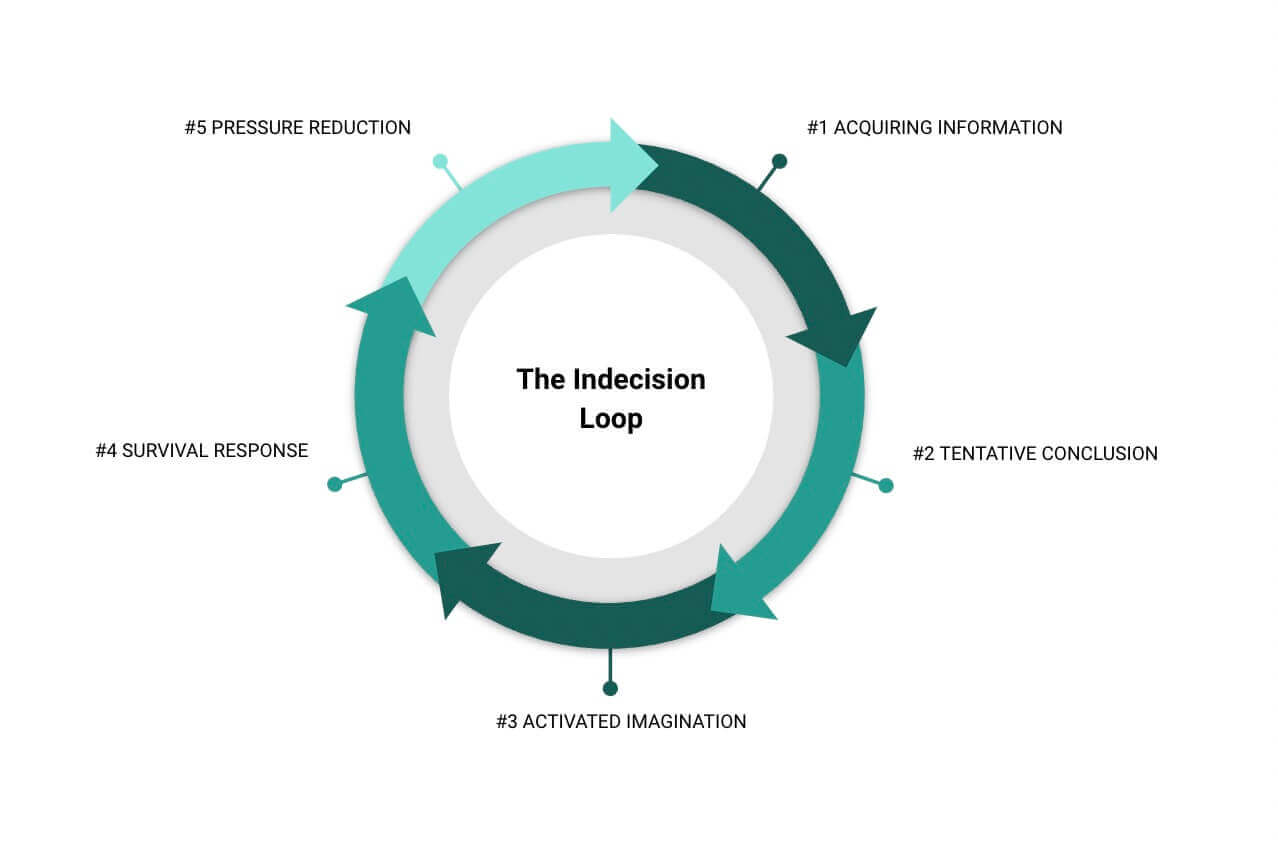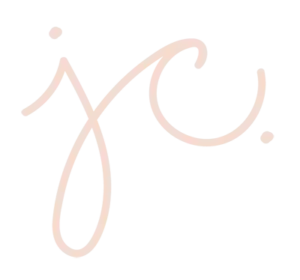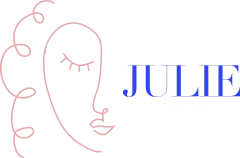“More is lost by indecision than wrong decision. Indecision is the thief of opportunity. It will steal you blind.” – Marcus Julius Cicero
Hard truth incoming… the habit of indecision is addictive.
I know this because as a pretty decisive person normally, I’ve found my brain stuck in several high stakes indecision loops during points of crisis and struggle in my life. And once out of it, the next time it happens, the well worn path in my brain says, “Oh good. Let’s do the indecision cycle forever!” and it’s even harder to break the next time.
The hope is that by writing this all out, it will help you do a few things:
- See the indecision cycle
- Understand why your brain is addicted to it
- Break it so it doesn’t become a habit
Let’s use a relatively benign example to illustrate the indecision cycle. Please understand that the more emotional attachment there is to a decision, the worse it’ll be.
Pretend you’ve been given $100,000 that has to be spent in one shot. You’re faced with the following choice:
- Put it into your friend’s real estate fund and receive $1000 a month until they sell 7 years later at a profit
- Take the money and start a restaurant on the busiest corner of your hometown
Here’s how the indecision cycle works.
First, you probably lay out the pros and cons. Maybe you talk to friends, family, some trusted money advisors. You do some research. Interview people who’ve done both.
This is the acquiring information phase of the indecision cycle.
It might take a few hours to a few weeks, and some decisions might even take a month or two. But in 95% of cases, the acquiring information phase moves to… tentative conclusion.
The tentative conclusion is your brains way of moving out from the middle and starting to “imagine” one choice over the other. For our example, let’s say after all that research, you’ve tentatively concluded that you’d rather invest the money than open a restaurant.
The next phase is activated imagination.
Typically someone will imagine themselves moving towards action before they actually do it. So in this case, you start to imagine filling out the paperwork for the investment. You maybe imagine going to the bank to wire the money.
As your imagination starts to activate the idea of this conclusion, emotions are going to come to the surface. This is the survival response phase.
In an indecision cycle, the emotions that rise up are usually fear based. Feelings like:
- Worry
- Fear
- Panic
- Freeze response
- Exhaustion
This is a hallmark of an indecision cycle because if you started imagining your conclusion and felt a confirmation of emotion (excitement for example), you’d not get stuck in indecision. You’d keep moving. So these emotions are your cue that you’re entering this cycle.
For most people, these negative emotions signal “STOP! You’re making the wrong decision!” It is survival brain in action. So then you go to the phase pressure reduction.
Your brain wants to reduce the pressure of feeling that emotion. So you stop imagining the choice. You head back to neutral. You’re rewarded with feelings like relief. This is received as pleasure in the brain. Safety. Phew. You didn’t jump off that cliff.
The next thing that happens? You return to acquiring information. Here you’re convinced that there is something you missed during the first acquiring information phase and it’s time to go back through it again. Because you wrongly assume that as long as you have the right information, you’ll not feel those emotions next time.
This time you may try to go through the cycle with the other choice – you open a restaurant. But the same thing happens. Around and around the circle you go, each time, your brain is rewarding you for returning to neutral. To safety.
That’s because our brain’s job is to keep us alive, and anything that threatens our sense of safety will be seen as enemy #1.
It explains how people appear to stay in the acquiring information phase forever, when in fact they are looping around.
And the worst is when you actually do find a little bit of new information. This confirms that yes, it was a good idea you kept going round and round or you would have missed that tidbit.

You are being rewarded for going in circles.
Your brain likes neutral because you get the dopamine high of the possibility of BOTH options without any of the risk or pain or sacrifice associated with making choice. There is some grief to saying goodbye to one choice and we avoid grief.
In the example I used of the $100k, there’s not a lot of high stakes happening.
- It isn’t a fully irreversible decision (like the decision to have a baby).
- It probably isn’t an emotionally charged decision (like the decision to get a divorce).
- It doesn’t necessarily tap into childhood beliefs (religious beliefs for example).
If you add irreversibility, emotional charge, and childhood beliefs, those are three things that are going to compound the survival response and keep you stuck longer. It’ll make the survival response more intense.
So how do you break out of the indecision loop?
- Observe the cycle
- Trust your acquiring information phase
- Remind yourself of the thief of indecision
- Steel yourself for your survival response and don’t listen to it
The first step is to observe yourself doing it. Once you see the behavior in action, you can actually move it from a subconscious pattern to a conscious choice you can push against.
The second step is to trust your acquiring information phase. For most decisions, whatever you learn within a few weeks or a month of hard core research, conversations, journaling, therapy, counsel, interviews, etc. is enough. Tiny little bits of new info aren’t going to change your outcome.
It’s also important to recognize that when you’re taking steps into an unknown territory, a place that requires you to start building new beliefs, there’s a level of risk that’s needed. Acquiring information may include examining your belief systems and making way for something new. Pick good mentors and critical thinkers to help you here because growth is messy.
The third step is to tell yourself that indecision is a thief, and carries far worse consequences over time than even a bad decision. Because even in a bad decision, there’s so much to learn and grow from.
The last step? Is to steel yourself for the survival response when it comes, and push through. Expect it. Don’t let it tell you you’re going to die if you choose. You will not.
I speak on this topic with deep experience in making irreversible, emotionally charged, difficult decisions that go against what is ingrained in me beliefs wise as a child.
It’s tough for us to do this work. To acknowledge the truth of what’s really going on inside of us.
I’ve done it multiple times, and each time… my biggest fear was that I would regret my decision and not be able to undo it. I feared the feeling of regret so much, I stayed stuck in the indecision cycle for a long time…and at the cost of my mental and physical health.
On the other side of these decisions, I can tell you…
- I didn’t regret it.
- I trusted myself.
And it made way for me to understand and learn in ways that weren’t possible otherwise.








0 Comments